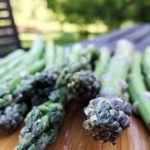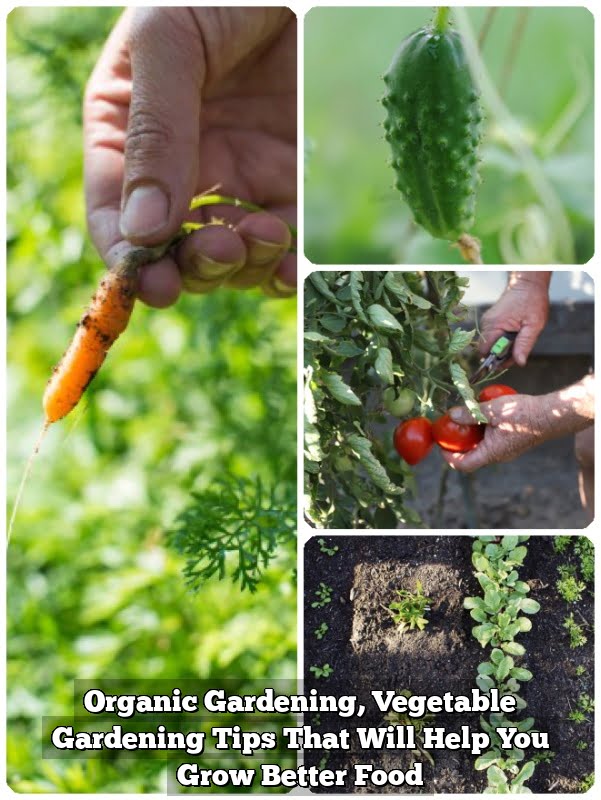Are you interested in starting your own vegetable garden in Nova Scotia? Whether you’re a beginner or an experienced gardener, NS Vegetable Gardening can be a rewarding and delicious hobby. In this beginner’s guide, we will provide you with all the information you need to get started on your vegetable gardening journey in NS.
When it comes to growing your own vegetables in Nova Scotia, there are several factors to consider such as climate, soil type, and location. This guide will take you through the process of choosing the right location for your garden, selecting the best vegetables for your specific climate and soil type, and preparing the soil for successful vegetable gardening.
In addition to providing helpful tips on preparing the soil and choosing the right vegetables, this guide will also walk you through planting and maintenance techniques specific to NS. From dealing with pests and diseases to harvesting and preserving your homegrown vegetables, every step of the process is covered in this comprehensive beginner’s guide to NS Vegetable Gardening.
Choosing the Right Location for Your Vegetable Garden
When it comes to starting your own vegetable garden in NS, one of the most important decisions you’ll make is choosing the right location for your garden. The success of your garden will greatly depend on the site you choose, so it’s essential to consider a few key factors before getting started.
Here are some tips for choosing the right location for your vegetable garden in NS:
1. Sunlight: One of the most crucial factors for a successful vegetable garden is sunlight. Most vegetables require at least 6-8 hours of direct sunlight each day. When selecting a spot for your garden, look for an area that receives ample sunlight throughout the day.
2. Accessibility to Water: Your vegetable garden will need regular watering, so it’s important to choose a location that is easily accessible to water sources. Consider proximity to a hose or irrigation system when deciding on the location of your garden.
3. Soil Quality: The quality of the soil in your chosen location is another critical factor. Conduct a soil test to determine its pH level and nutrient content. You may need to amend the soil with organic matter or fertilizers to create an optimal growing environment for your vegetables.
4. Protection from Wind and Pests: Choose a location that offers some protection from strong winds and potential pests. Consider natural windbreaks like fences or shrubs, and be mindful of any nearby trees or plants that may attract unwanted pests to your garden.
By carefully considering these factors when choosing the right location for your vegetable garden in NS, you’ll be setting yourself up for a successful and bountiful harvest of homegrown vegetables. With proper planning and preparation, you can create an ideal growing environment for your favorite fruits and vegetables right in your own backyard.
Selecting the Best Vegetables for Your Climate and Soil Type in NS
When it comes to vegetable gardening in Nova Scotia (NS), selecting the right vegetables for your climate and soil type is crucial for a successful harvest. The region’s climate, with cool summers and cold winters, requires plants that are able to thrive in these conditions. Additionally, the soil type in NS varies across the province, from clay and loam to sand, each requiring different types of vegetables to grow successfully.
One of the key considerations when selecting vegetables for your NS garden is the length of the growing season. With a relatively short frost-free period, it’s important to choose vegetables that can mature within this timeframe. Quick-growing vegetables such as lettuce, radishes, and spinach are well-suited for NS’s growing season.
In addition to considering the climate and growing season, it’s also important to select vegetables that are suitable for the soil type in your area of NS. For example, if you have heavy clay soil, root crops like carrots and potatoes are well-suited for these conditions.
On the other hand, if you have sandy soil, vegetables such as beets and beans may fare better. Conducting a soil test can provide valuable information on what types of amendments or fertilizers may be needed to improve soil quality for specific vegetable plants.
| Vegetable | Suitable Soil Type |
|---|---|
| Lettuce | Loamy Soil |
| Carrots | Clay Soil |
| Tomatoes | Sandy Loam Soil |
By considering both the climate and soil type in NS when selecting vegetables for your garden, you can increase the likelihood of a successful harvest and enjoy an abundant supply of homegrown produce. With careful planning and research into suitable vegetable varieties, you can create a thriving garden that provides fresh, nutritious food throughout the growing season.
Preparing the Soil
One of the most important aspects of successful vegetable gardening in Nova Scotia (NS) is ensuring that you have high-quality soil. The health of your plants depends heavily on the condition of your soil, so it’s crucial to take the time to prepare it properly. Here are some tips for improving soil quality in your NS vegetable garden.
First, it’s essential to test the pH of your soil. Most vegetables prefer a slightly acidic soil pH, so if your soil is too acidic or alkaline, you may need to amend it with lime or sulfur to adjust the pH levels. A simple at-home soil test kit can help you determine the pH of your soil and make any necessary adjustments.
Second, consider adding organic matter to your soil. This can come in the form of compost, well-rotted manure, or other natural materials that will enrich the soil and provide essential nutrients for your plants. Organic matter also helps improve the texture and structure of the soil, making it easier for plant roots to penetrate and absorb water and nutrients.
Finally, consider using raised beds for your NS vegetable garden. Raised beds offer better drainage, warmer soil temperatures, and fewer issues with compaction. They also allow you to fill them with high-quality soil that’s specifically tailored for vegetable gardening.
| Tips | Benefits |
|---|---|
| Test the pH of your soil | Determines if amendments are needed |
| Add organic matter | Enriches the soil with essential nutrients |
| Consider using raised beds | Improved drainage and warmer soil temperatures |
Planting and Maintenance
Planting a successful vegetable garden in NS requires careful planning and ongoing maintenance. Here are some essential steps to guide beginners through the process.
Choosing the Right Time to Plant
Before beginning your vegetable garden, it’s crucial to understand the growing season in NS. Some vegetables thrive in cool weather, while others require warmer temperatures. Research the best planting times for different vegetables to ensure a successful harvest.
Preparing the Garden Beds
Proper soil preparation is vital for a thriving vegetable garden. Start by clearing the area of any weeds or debris. Then, loosen the soil and incorporate organic matter, such as compost or aged manure, to improve its structure and fertility. Testing the soil pH can also help determine if any amendments are necessary for optimal plant growth.
Choosing the Right Vegetables
Selecting the right vegetables for your climate and soil type is essential for a successful harvest. Consider what grows well in NS and choose varieties that are suitable for your specific growing conditions. Some popular choices for NS vegetable gardening include potatoes, carrots, kale, and tomatoes.
Once you’ve planted your vegetables, it’s important to stay on top of maintenance tasks such as watering, fertilizing, and weeding. Regular monitoring for pests and diseases is also key to preventing any potential issues that could impact your garden’s success over time. With proper care and attention to detail, you can enjoy a bountiful harvest from your NS vegetable garden.
Dealing With Pests and Diseases
One of the challenges faced by vegetable gardeners in NS is dealing with pests and diseases that can wreak havoc on their crops. However, there are natural and organic solutions that can help protect your plants without resorting to harmful chemicals. One effective method is companion planting, which involves growing certain plants together to repel pests or attract beneficial insects. For example, planting marigolds alongside your vegetables can deter nematodes, while attracting pollinators like bees and butterflies.
Another natural approach to pest control is using homemade remedies such as garlic and chili pepper sprays to ward off common garden pests like aphids and caterpillars. Additionally, introducing beneficial insects such as ladybugs, lacewings, and predatory mites can help keep pest populations in check. These environmentally friendly methods not only protect your vegetable garden but also contribute to the overall health of the ecosystem.
In addition to pests, diseases can also pose a threat to your NS vegetable garden. To prevent fungal infections and other diseases, it’s important to practice good gardening hygiene by removing any diseased plant material and maintaining proper air circulation between plants.
Applying organic fungicides like neem oil or copper-based solutions can also help control fungal diseases without harming beneficial organisms in the soil. By being proactive and incorporating these natural and organic methods into your gardening practices, you can effectively manage pests and diseases while maintaining a healthy, thriving vegetable garden in NS.
Harvesting and Preserving Your Homegrown Vegetables
After all the hard work of planting, nurturing, and maintaining your vegetable garden in NS, it’s finally time to reap the rewards. Harvesting your homegrown vegetables is not only satisfying but also ensures that you are enjoying the freshest produce possible. Here are some tips for harvesting and preserving your vegetables:
1. Harvest at the Right Time: Each vegetable has its own optimal time for harvesting. Make sure to research the specific harvest times for each type of vegetable you have planted in your NS garden. For example, tomatoes should be harvested when they are fully colored and slightly soft to the touch, while leafy greens like lettuce should be harvested when they reach a desirable size.
2. Proper Storage: Once harvested, it is essential to store your vegetables properly to prolong their shelf life. Some vegetables can be stored in a cool, dark place at room temperature, while others may require refrigeration. Consider investing in storage containers or bags specifically designed for storing produce.
3. Methods of Preservation: If you find yourself with a surplus of vegetables from your NS garden, consider preserving them for future use. There are various methods of preservation such as canning, freezing, drying, and pickling that can help you extend the life of your harvest.
Preserving the bounty from your NS vegetable garden allows you to enjoy homegrown produce year-round and reduces waste. With proper harvesting and preservation techniques, you can savor the flavors of your hard work long after the growing season has ended.
Community Resources and Support for NS Vegetable Gardeners
When starting a vegetable garden in NS, it’s important to remember that you’re not alone. There are many community resources and support systems available to help you along the way. From local gardening clubs to online forums, finding a network of like-minded individuals can provide valuable advice, tips, and encouragement.
Local Gardening Clubs and Organizations
One great way to connect with other vegetable gardeners in NS is by joining a local gardening club or organization. These groups often hold regular meetings, workshops, and events where members can share their experiences and learn from one another. Additionally, many clubs have community gardens where members can volunteer and collaborate on group projects.
Online Forums and Social Media Groups
In today’s digital age, there are countless online forums and social media groups dedicated to vegetable gardening. These platforms offer a wealth of knowledge and support from experienced gardeners across NS and beyond. Whether you have questions about specific plants or need advice on dealing with pests, the online gardening community is always ready to lend a helping hand.
NS Agricultural Extension Services
Another valuable resource for NS vegetable gardeners is the province’s agricultural extension services. These organizations provide educational programs, workshops, and resources specifically tailored to local growers. Whether you’re looking for information on soil testing or seeking guidance on sustainable gardening practices, the agricultural extension services can offer expert advice to help you succeed in your vegetable garden.
By tapping into these community resources and support networks, novice vegetable gardeners in NS can feel confident knowing they have access to a wealth of knowledge and assistance as they embark on their gardening journey. Whether it’s through local clubs, online forums, or agricultural extension services, there are plenty of opportunities for new growers to connect with others who share their passion for cultivating homegrown produce in Nova Scotia.
Conclusion
In conclusion, NS vegetable gardening offers a plethora of benefits for both individuals and communities. Not only does it provide a sustainable source of fresh, nutritious produce, but it also promotes physical activity, mental well-being, and community engagement. By cultivating a vegetable garden in your own backyard or joining a community garden, you can take control of your food supply, reduce your environmental impact, and connect with like-minded individuals who share your passion for sustainable living.
Additionally, NS vegetable gardening allows you to reconnect with nature and gain a better appreciation for the work that goes into producing the food we consume. It also serves as an educational platform for children and adults alike to learn about plant life cycles, environmental stewardship, and the importance of healthy eating. By getting involved in local gardening initiatives and workshops, you can further expand your knowledge and skills while contributing to the greater good of the community.
Ultimately, NS vegetable gardening is an enriching and fulfilling experience that has the power to transform not only our diets but also our overall quality of life. As we celebrate the benefits of vegetable gardening in Nova Scotia, let us continue to support and inspire one another in this journey towards sustainable living and environmental stewardship.
Whether you are just starting out or have been an avid gardener for years, there is always something new to learn and share within the vibrant community of NS vegetable gardeners.
Frequently Asked Questions
When Should I Plant My Garden in NS?
In NS, the best time to plant your garden is typically in late May or early June once the threat of frost has passed. This timing allows for optimal growing conditions throughout the summer months.
What Month Should I Plant My Vegetable Garden?
The ideal month to plant your vegetable garden in Nova Scotia is typically in May. This will give your vegetables enough time to grow and thrive before the cooler temperatures of fall set in.
What Crops Grow Best in Nova Scotia?
Nova Scotia’s climate is well-suited for certain crops such as potatoes, carrots, broccoli, cabbage, and rutabaga. These cool-weather crops tend to thrive in the region’s conditions, making them popular choices for local gardeners.

If you’re looking to get into vegetable gardening, or are just looking for some tips on how to make your current garden better, then you’ve come to the right place! My name is Ethel and I have been gardening for years. In this blog, I’m going to share with you some of my best tips on how to create a successful vegetable garden.





